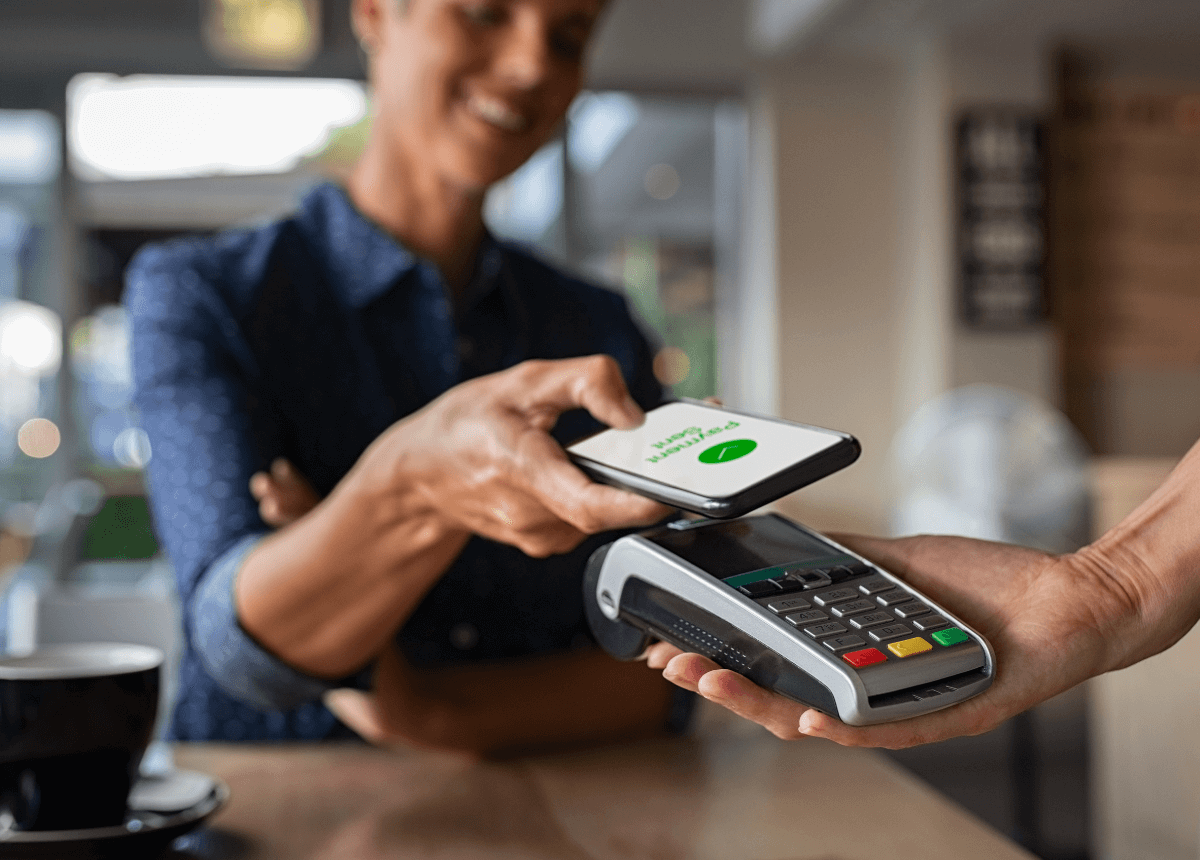Private Label Credit Cards for Retailers: How to Measure, Optimize, and Avoid Fraud
Retail
In the competitive retail landscape, private label credit cards (PLCCs) have emerged as a powerful tool to engage customers and drive growth. According to a report by Freedonia Group, transaction volumes for private label credit cards grew in 2021 and 2022, with purchase volume projected to grow 9.8% through 2025.
As rising interest rates and inflation put pressure on consumer wallets, access to credit sources such as PLCCs is more important than ever. But how do these cards work, what benefits do they offer, and most importantly, how can retailers measure the success of their PLCC programs?
In this blog post, we’ll answer these questions and delve deeper into the world of PLCCs. We discuss their unique advantages for retailers, provide insights on tracking their effectiveness, and share strategies on how data can be used to optimize these programs and prevent fraud. Whether you're a retailer considering launching a PLCC program or seeking to enhance your current one, this guide is designed to help you navigate the journey.
What is a private label credit card?
Private label credit cards are store-branded credit cards issued by a retailer to its customers, intended to be used exclusively at that retailer. Sometimes referred to as “white label credit cards,” "proprietary credit cards," or “closed loop cards,” PLCCs are designed to promote customer loyalty and provide the business with consumer spending data.
Most private label credit cards work in tandem with store loyalty programs, offering additional perks and loyalty rewards when using the card, such as discounts, special financing deals, or points that can be redeemed for merchandise. While buy now, pay later (BNPL) has grown as an alternative option for retail shopping via installment payment, BNPL financing doesn’t offer the same type of rewards and loyalty benefits of a private label store card. These reward offerings are typically the main driver of consumer adoption of PLCCs.
Private label credit cards shouldn’t be confused with co-branded credit cards, which may also offer the consumer perks tied to the issuing brand, but can be used anywhere credit cards are accepted. Co-branded credit cards are created through a partnership between a bank and a specific brand, and use major credit card networks such as VISA and Mastercard, while private label credit cards do not.
How do private label credit cards work?
To create a private label credit card, retailers partner with a third-party financial institution such as a bank or commercial finance company to manage the card program. The largest provider of PLCC programs is Bread Financial (formerly known as Comenity and Alliance Data Systems). These third-party partners perform functions such as issuing the cards, funding the credit lines, and collecting payments from customers. The financial institution operates the systems behind the card, providing the technology and customer service, while the retailer provides the benefits and perks to the cardholder.
Private label credit cards don’t have a credit card network logo such as VISA or Mastercard, and can only be used at the stores of the issuing retailer. However, the cards function similarly to regular credit cards in most other ways. The financial institution offers a grace period after the end of a billing cycle, and charges interest on carried card balances and fees on late payments.
The benefits of private label credit cards
Private label credit cards are a great tool for driving customer loyalty, and usually work closely with retail loyalty programs, offering exclusive perks above and beyond the store’s standard loyalty program. Private label credit cards allow retailers to offer more lenient terms to customers then they could otherwise, encouraging the customer to spend more, while also earning loyalty rewards and VIP benefits such as receiptless returns, which encourage customer loyalty and repeat business. The cards also help increase brand awareness and customer retention, as their physical presence in the customer’s wallet helps keep the retailer’s brand top of mind.
Additionally, because these cards don’t use the traditional payment rails such as VISA or Mastercard, retailers can dramatically save on payment processing fees. It is often these savings that allow the retailer to fund their customer loyalty program. The financial institution will also typically share profits from private label card transactions with the retailer.
Measuring the value of a private label credit card program
It’s clear PLCC programs can help drive sales for retailers, but how can you measure their value? How much top-line revenue do they actually add for your particular brand, and what is the customer value of a cardholder? Without the proper data, it’s difficult for retailers to measure the effectiveness of such a program on sales. A tool such as Agilence Analytics, the leading retail and loss prevention analytics platform, can help.
In one real-life example, a bix box retailer with over 200 locations knew their associates weren’t pushing for PLCC sign-ups at the register aggressively enough – but they had no way to determine if these cards were having a big enough impact on sales to justify additional training for cashiers and/or discounts to increase signups.
The retailer used Agilence to identify the sales value of customer transactions using the private label credit card. The data indicated that when the proprietary credit card was used, the order total was $27 higher on average than the average order total of all credit card sales. The retailer discovered that if they pushed their proprietary credit card sign ups at the register, they would have an opportunity to significantly increase basket value and improve top-line sales by $1.8 million annually.
Using Agilence, they also measured high and low performers by store in order to identify which stores were meeting sales goals, and which required additional training, allowing them to focus their training efforts in the right store locations to grow their private card program – and their profits.
Optimizing PLCC programs and avoiding fraud and abuse
When it comes to external fraud, private label credit cards are subject to the same vulnerabilities as any other credit card, such as “card not present” fraud, contactless payment fraud, and chargeback abuse. The impact of these types of fraud is largely based on your agreement with your third-party card provider. If you have a good agreement with a competent partner, they will bear most of the risk with payment fraud.
Since private label cards work intimately with retailer’s loyalty programs, they can also be subject to the same type of loyalty program fraud or rewards abuse – including by legitimate customers who exploit loyalty program policy and procedural gaps to rack up points or achieve extra benefits. (Agilence can help you identify this type of loyalty program abuse, as well as other causes of shrink and preventable loss.)
However, the largest risk for retailers with private label credit card programs is internal abuse due to unoptimized sales programs. Because PLCCs can be so lucrative, retailers who have them almost always have a spiff (sometimes spelled SPIFF, SPIF, or SPIV) program, a short-term sales incentive strategy to encourage employees in opening new private label card accounts.
Often, the problem with these spiffs is a misalignment of incentives. When sales incentives are awarded for say, new signups, associates will often game the signup system just to achieve the goal, by entering junk data, signing up unqualified prospects, and more.
However, by using data to more finely tune their programs, retailers can avoid these problems.
With Agilence Analytics, retail operators can easily view metrics such as Average Basket Size, Average Basket with Existing PLCC, Average Basket with New PLCC, and more. With different ways to look at your PLCC program, it’s easier to create new more concrete and effective goals that better align incentives within spiff programs. Instead of an oversimplified goal such as “5 new signups a week,” you can create goals and conditions such as “signups with an average basket size of X amount.” Because you’ll have visibility into the patterns of your private label card shoppers, you’ll know everything you need to make reasonable adjustments to keep getting the most out of your program, such as where to focus your training resources and incentives, which incentives are leading to the outcomes you want, and what you can reasonably expect as results.
The type of oversight enabled by a tool like Agilence Analytics helps retailers get the most of their PLCC programs – from quantifying program outcomes to optimizing their training, rewards, and sales incentives to avoiding program abuse and fraud. When it comes to the management of a private label card program, knowing the numbers can make all the difference in making the best decisions for your company’s bottom line.
But the benefits of unlocking the power within your data don’t end there. You can leverage your data in a wide variety of ways to increase sales and reduce shrink. Learn more about the Agilence Analytics platform and how retail analytics can improve your margins.
Related Articles

How to Prevent "Card not Present" Fraud
Even before the pandemic, card not present (CNP) payments were on the rise. Given the convenience and increased health concer...
Fighting Chargeback Fraud: Is there such a thing as Friendly Fraud?
Retailers are making it easier to return online purchases, issuing refunds before they receive the return goods. This policy ...
The Rising Threat of Contactless Payment Fraud
Merchants and customers want the same thing – a frictionless payment experience. Everyone from Walmart to city governments an...Subscribe to our blog
Receive free educational resources like exclusive reports, webinars, and industry thought leadership articles straight to your inbox.

